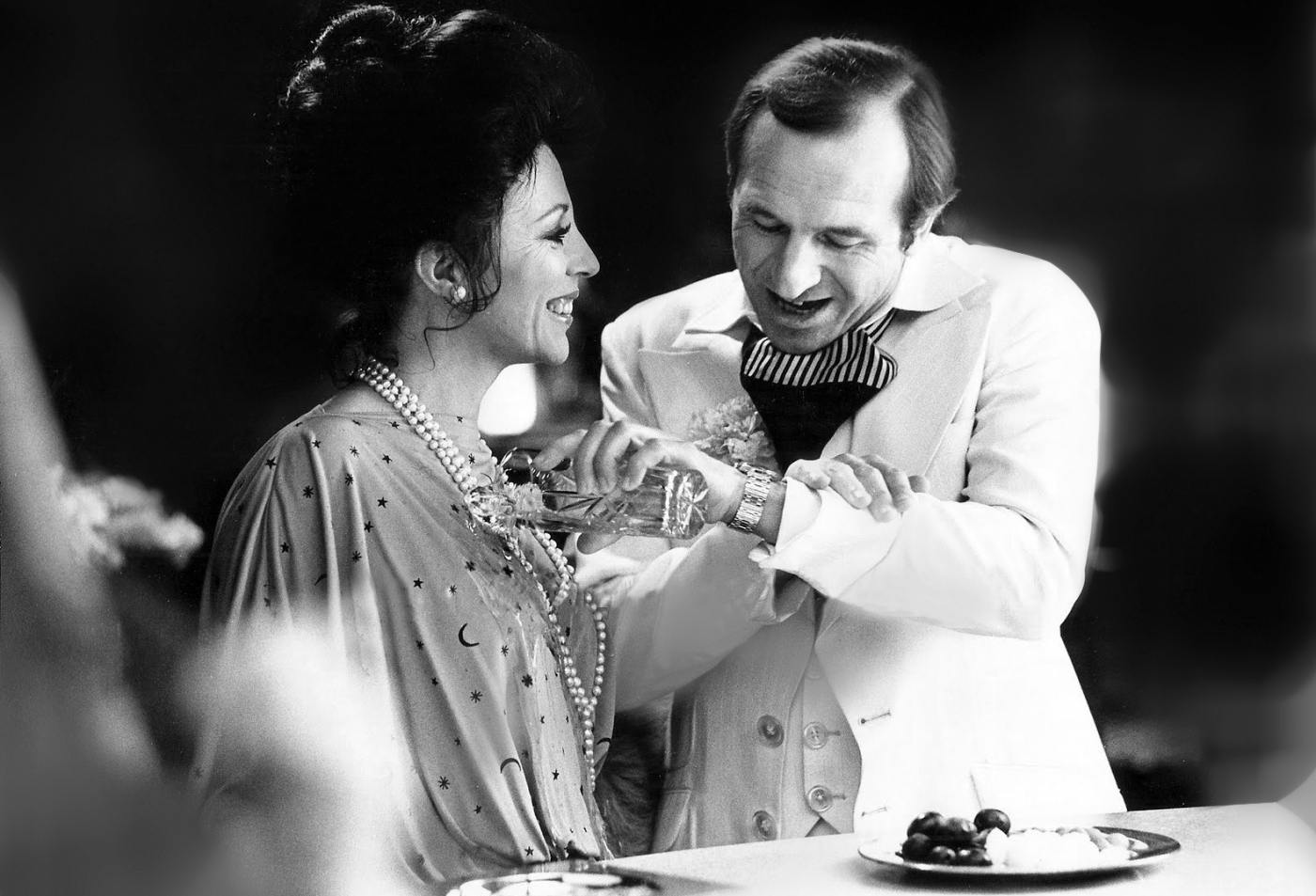
Anytime, anyplace, anywhere
A renowned master of all things spirits related, Alex Kammerling ponders the return of the Great British aperitif, and what he wants to bring to the table

A renowned master of all things spirits related, Alex Kammerling ponders the return of the Great British aperitif, and what he wants to bring to the table

“Often a man takes a cocktail to freshen his appetite for breakfast. This object is attained because alcohol and bitters stimulate the stomach.”
That little tip appeared in the Latter Day Saints’ Millenial Star in 1897.
My parents are terrible drinkers. Their drinks cabinet is more a storage cupboard of alcohol-based gifts rather than a source of refreshment and Bacchanalian enjoyment. My earliest memory of any form of aperitif was my mum pouring herself a single Cinzano Bianco and lemonade which would be enough to send her giddy, her cheeks flushed and eyes glassy.
In “those” days, Lorraine Chase and Joan Collins (above) were the poster-girls for the aperitif. Apart from a couple of facelifts, (both the brands and the actresses) the products have barely changed. The aperitif has kept a low-profile during the last 20 years, but brands such as Campari – the crucial ingredient in the trendiest drink of the moment, the Negroni – have put the aperitif centre stage once more.
British drinking culture still has its lager-guzzling, alcopop-fuelled binge-drinkers, but at the other end of the spectrum is the sophisticated imbiber, drinking less but drinking better. In much the same way as we may choose to eat a free-range organic chicken or high-percentage cocoa chocolate, we are developing a more refined palate, a better appreciation of the quality and the provenance of the alcohol we are consuming.
My earliest memory of any form of aperitif was my mum pouring herself a single Cinzano Bianco and lemonade which would be enough to send her giddy
We are all becoming such food-obsessed-Instagramers that it was only a matter of time before we started to take inspiration on drinking culture from our Continental cousins. The growing popularity of aperitifs in recent years – in particular the aforementioned the Negroni and the Aperol spritz – has been helped by passionate bartenders and establishments such as Frank Boxers’ Peckham roof-top bar and Russell Norman’s Polpo group. The rise of the no-reservations restaurant has also meant that a drink before dinner has become more prevalent for customers whilst they wait for their table.
The aperitif is an occasion, which the Italians and French have long prescribed to – a bitter stimulating drink to mark the end of the working day and the start of an evening relaxing and enjoying food. Aperitif comes from the Latin “aperture”, “to open”, as the bitter element helps the stomach prepare for a meal and aids digestion.

The dashing Mr Kammerling
Although I have taken inspiration from European aperitifs – brands such as the gentian-based Suze, the bitter-sweet bite of Campari and the rich intense flavor of Punt e Mes, Kamm & Sons takes equal inspiration from that quintessentially British drink, gin.
Like gin, Kamm & Sons is distilled using natural ingredients sourced from all over the world (many former colonies). Juniper is the main ingredient in gin, whereby Ginseng, fresh grapefruit peel and manuka honey is the basis for Kamm & Sons. The recipe started in my kitchen with jars of alcoholic botanical infusions. I made notes on all the individual tastes, and started blending them together. There were 100’s of different blends and mistakes before I reached the perfectly balanced recipe.
I drink it neat over ice with a lemon twist or as a Kamms Bitter Lemon (simply mixed with Fever Tree Bitter Lemon). It also makes a mean spritz with Elderflower, English sparkling wine and soda I like to call the “Brits spritz”. C